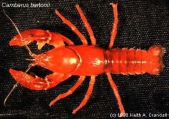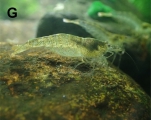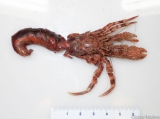Decanet source details
Heteroptychus anouchkae Baba, 2018 (original description)
Heteroptychus apophysis Baba, 2018 (original description)
Heteroptychus claudeae Baba, 2018 (original description)
Heteroptychus colini Baba, 2018 (original description)
Heteroptychus lemaitrei Baba, 2018 (original description)
Heteroptychus paulae Baba, 2018 (original description)
Uroptychus abdominalis Baba, 2018 (original description)
Uroptychus adiastaltus Baba, 2018 (original description)
Uroptychus adnatus Baba, 2018 (original description)
Uroptychus alophus Baba, 2018 (original description)
Uroptychus angustus Baba, 2018 (original description)
Uroptychus annae Baba, 2018 (original description)
Uroptychus anoploetron Baba, 2018 (original description)
Uroptychus articulatus Baba, 2018 (original description)
Uroptychus baeomma Baba, 2018 (original description)
Uroptychus benthaus Baba, 2018 (original description)
Uroptychus bertrandi Baba, 2018 (original description)
Uroptychus beryx Baba, 2018 (original description)
Uroptychus boisselierae Baba, 2018 (original description)
Uroptychus brachycarpus Baba, 2018 (original description)
Uroptychus buantennatus Baba, 2018 (original description)
Uroptychus ciliatus (Van Dam, 1933) (additional source)
Uroptychus clarki Baba, 2018 (original description)
Uroptychus convexus Baba, 1988 (additional source)
Uroptychus corbariae Baba, 2018 (original description)
Uroptychus ctenodes Baba, 2018 (original description)
Uroptychus cylindropus Baba, 2018 (original description)
Uroptychus defayeae Baba, 2018 (original description)
Uroptychus dejouanneti Baba, 2018 (original description)
Uroptychus denticulifer Baba, 2018 (original description)
Uroptychus denticulisquama Baba, 2018 (original description)
Uroptychus depressus Baba, 2018 (original description)
Uroptychus diaphorus Baba, 2018 (original description)
Uroptychus disangulatus Baba, 2018 (original description)
Uroptychus dissitus Baba, 2018 (original description)
Uroptychus dualis Baba, 2018 (original description)
Uroptychus duplex Baba, 2018 (original description)
Uroptychus echinatus Baba, 2018 (original description)
Uroptychus elongatus Baba, 2018 (original description)
Uroptychus enriquei Baba, 2018 (original description)
Uroptychus eratus Baba, 2018 (original description)
Uroptychus exilis Baba, 2018 (original description)
Uroptychus floccus Baba, 2018 (original description)
Uroptychus grandior Baba, 2018 (original description)
Uroptychus granulipes Baba, 2018 (original description)
Uroptychus imparilis Baba, 2018 (original description)
Uroptychus inaequalis Baba, 2018 (original description)
Uroptychus inermis Baba, 2018 (original description)
Uroptychus kareenae Baba, 2018 (original description)
Uroptychus karubar Baba, 2018 (original description)
Uroptychus lacunatus Baba, 2018 (original description)
Uroptychus lanatus Baba, 2018 (original description)
Uroptychus latior Baba, 2018 (original description)
Uroptychus laurentae Baba, 2018 (original description)
Uroptychus longicarpus Baba, 2018 (original description)
Uroptychus lumarius Baba, 2018 (original description)
Uroptychus macrolepis Baba, 2018 (original description)
Uroptychus magnipedalis Baba, 2018 (original description)
Uroptychus marcosi Baba, 2018 (original description)
Uroptychus megistos Baba, 2018 (original description)
Uroptychus mesodme Baba, 2018 (original description)
Uroptychus micrommatus Baba, 2018 (original description)
Uroptychus minor Baba, 2018 (original description)
Uroptychus modicus Baba, 2018 (original description)
Uroptychus nebulosus Baba, 2018 (original description)
Uroptychus norfolkanus Baba, 2018 (original description)
Uroptychus numerosus Baba, 2018 (original description)
Uroptychus obtusus Baba, 2018 (original description)
Uroptychus palmaris Baba, 2018 (original description)
Uroptychus paraplesius Baba, 2018 (original description)
Uroptychus parisus Baba, 2018 (original description)
Uroptychus pectoralis Baba, 2018 (original description)
Uroptychus pedanomastigus Baba, 2018 (original description)
Uroptychus perpendicularis Baba, 2018 (original description)
Uroptychus philippei Baba, 2018 (original description)
Uroptychus plautus Baba, 2018 (original description)
Uroptychus plumella Baba, 2018 (original description)
Uroptychus pollostadelphus Baba, 2018 (original description)
Uroptychus poorei Baba, 2018 (original description)
Uroptychus posticus Baba, 2018 (original description)
Uroptychus poupini Baba, 2018 (original description)
Uroptychus psilus Baba, 2018 (original description)
Uroptychus quartanus Baba, 2018 (original description)
Uroptychus quinarius Baba, 2018 (original description)
Uroptychus salomon Baba, 2018 (original description)
Uroptychus sarahae Baba, 2018 (original description)
Uroptychus seductus Baba, 2018 (original description)
Uroptychus senarius Baba, 2018 (original description)
Uroptychus senticarpus Baba, 2018 (original description)
Uroptychus septimus Baba, 2018 (original description)
Uroptychus setifer Baba, 2018 (original description)
Uroptychus shanei Baba, 2018 (original description)
Uroptychus smib Baba, 2018 (original description)
Uroptychus spinosior Baba, 2018 (original description)
Uroptychus spinulus Baba, 2018 (original description)
Uroptychus squamifer Baba, 2018 (original description)
Uroptychus stenorhynchus Baba, 2018 (original description)
Uroptychus strigosus Baba, 2018 (original description)
Uroptychus tafeanus Baba, 2018 (original description)
From the Greek heteros (different), plus the last syllables of Uroptychus (ptychos = plate). [details]
Named for Anouchka Sato who helped me in various ways during my stays at the Paris Museum. [details]
The specific name is a noun in apposition from the Greek apophysis (process, projection) for two projections on the ... [details]
Named for Claude Crosnier for her hospitality during my stays in Paris. [details]
Named for Colin L. McLay of the University of Canterbury for his friendship and help in reading many of my manuscripts. [details]
Named for Rafael Lemaitre of the Smithsonian institution, for his help and friendship. [details]
Named for Paula Martin-Lefevre of the Muséum national d’histoire naturelle for her contribution to collection ... [details]
The latin abdominalis (abdominal) refers to the abdomen of the species that has tergites 1 and 2 each armed with ... [details]
From the Greek adiastaltos (not clearly defined), alluding to sternite 3 medially bearing a poorly defined sinus, ... [details]
From the latin adnatus (joined to, united with), alluding to the antennal scale being fused with the antennal ... [details]
From the Greek lophos (ridge) with suffix a-, meaning without ridge, referring to the absence of sharp transverse ... [details]
From the latin angustus (narrow), referring to the ultimate article of antennular peduncle that is as broad as the ... [details]
Named for Anna W. McCallum for her contributions to the knowledge of western Australian Chirostylidae. [details]
The specific name is a noun in apposition from the Greek anoplos (unarmed) and etron (abdomen), for the unarmed ... [details]
From the latin articulatus (articulated), in reference to the articulated antennal scale, by which the species is ... [details]
The specific name is a noun in apposition from the Greek baios (small) and omma (eye), referring to relatively ... [details]
Named for the cruise Benthaus, by which the type material was collected; used as a noun in apposition. [details]
Named for Bertrand richer de Forges for his enormous efforts in the field work. [details]
Named for the Beryx 11 cruise by which the new species was collected; used as a noun in apposition. [details]
Named for Marie-Catharine Boisselier of MNHN for her help with molecular analyses. [details]
From the Greek brachys (short) and carpos (carpus, wrist), referring to short carpi of P2-4, by which the species ... [details]
From the latin bu (prefix meaning large, huge) plus antenna plus tus (suffix denoting possession), referring to the ... [details]
Named after Paul F. Clark for his friendship and help in arranging loans of material. [details]
Dedicated to Laure Corbari of MNHN for her help and support. [details]
From the Greek ktenodes (comb-like), alluding to a comb-like arrangement of spines on the lateral margin of the ... [details]
The specific name is a noun in apposition from the Greek kylindros (a cylinder) and pous (a foot), referring to ... [details]
Name for Danielle Defaye of MNHN for her help during my stays at the Paris Museum. [details]
Named after Jean-Françoise Dejouannet, artist at the Paris Museum, for his friendship. [details]
From the latin denticulus (dim. of dens, tooth) and fer (to bear), referring to the denticles covering the body. [details]
From the latin denticulus (dim. of dens, tooth) and squama (scale), a noun in apposition, referring to the antennal ... [details]
From the latin depressus (= depressed), alluding to the depressed rostral surface clearly bordering the gastric and ... [details]
From the Greek diaphoros (different), alluding to an unusually slender P2 especially distal two articles. [details]
From the latin dis (without) plus angulatus (having angles), alluding to the absence of lateral orbit spine, a ... [details]
From the latin dissitus (distant), alluding to the anterior second of the carapace lateral marginal spines that is ... [details]
From the latin dualis (of two) in reference to two strong ventromesial spines on the P1 merus by which the species ... [details]
The specific name is a noun in apposition from the latin duplex (double) for the flexor marginal spines of the P2-4 ... [details]
From the latin echinatus (spiny), alluding to the spiny propodi of the walking legs. [details]
From the latin elongatus (prolonged), referring to elongate eyes, one of the characteristic features of the new species. [details]
The species is named for enrique Macpherson who has contributed greatly to the knowledge of squat lobsters. [details]
From the Greek eratos (lovely), alluding to the small lovely species. [details]
From the latin exilis (small, slender) referring to slender eyes of the species. [details]
From the latin floccus (tuft of hairs), suggesting the setose dactyli of P2-4 characteristic of the new species. [details]
From the latin grandior (larger), alluding to the unusually large distal second spine on the flexor margin of the ... [details]
From the latin granulus (a small grain) plus pes (foot), alluding the granulose P1 merus and carpus. [details]
From the latin imparilis (different), suggesting that the species is different from the closest congener U. parisus ... [details]
From the latin inaequalis (unequal), alluding to the two terminal spines of different sizes on the P2-4 dactyli, ... [details]
From the latin inermis (unarmed), alluding to the P1 ischium without subterminal spine, a character to separate the ... [details]
Named for Kareen Schnabel for her contributions to the knowledge of squat lobster taxonomy and distribution. [details]
Named for the cruise KARUBAR, by which the holotype was collected; used as a noun apposition. [details]
From the latin lacunatus (hollowed out), alluding to a deeply excavated anterior margin of the sternal plastron ... [details]
From the latin lanatus (soft), alluding to soft setae covering the body, characteristic of the species. [details]
From the latin latior (broader), alluding to the carapace breadth being distinctly greater than that of the close ... [details]
The name is dedicated to the late Michéle de Saint laurent who had shared the interest with me in squat lobsters. [details]
From the latin longus (long) plus carpus (carpus, hand), referring to the P4 carpus, which is longer than the P3 ... [details]
From the latin lumarius (of thorns), alluding to strong spines on the flexor margin of P2-4 dactyli, by which the ... [details]
From the Greek macros (long) and lepis (scale), alluding a long antennal scale displayed by the species. [details]
From the latin magnus (large) and pedalis (of the foot), referring to a massive P1 of the species. [details]
The species is named for Marcos S. Tavares for his long-lasting friendship. [details]
From the Greek megistos (largest, greatest), alluding to the ultimate of the flexor marginal spines of P2-4 ... [details]
From the Greek mesodme (something between), alluding to a pair of small spines between two larger epigastric ... [details]
From the Greek mikrommatos (small-eyed), alluding to the eye cornea much smaller than the remaining eyestalk, a ... [details]
From the latin minor (smaller), alluding to the small size of the species. [details]
From the latin modicus (medium, moderate), alluding to the moderate size of the species. [details]
From the latin nebulosus (indefinite, obscure), alluding to the systematic status of this species which is very ... [details]
Named for the type locality of the species. [details]
From the latin numerosus (many), referring to numerous spines on the rostral lateral margin, the character to ... [details]
From the latin obtusus (blunt, dull), alluding to distomesial spines of antennal articles 4-5 that are distally ... [details]
From the latin palmaris (pertaining to the palm of the hand) for the P1 palm of the species which is massive and ... [details]
From the Greek paraplesios (somewhat similar), alluding to the morphological characteristics of the species, which ... [details]
From the Greek parisos (evenly balanced), alluding to the eyestalk being evenly broad from proximal to distal, not ... [details]
From the latin pectoralis (pertaining to the breast), alluding to the elongate sternal plastron with the anterior ... [details]
From the Greek pedanos (short) plus mastigos (whip), alluding to a short antennal flagellum possessed by the new ... [details]
From the latin perpendicularis (upright, perpendicular), referring to spines on the P2-4 dactyli that are ... [details]
Named for Philippe Bouchet of MNHN for his support and friendship. [details]
From the latin plautus (broad), alluding to the broad rostrum and broad sternal plastron of the species. [details]
The specific name is a noun in apposition from the latin plumella, diminutive of pluma (= soft feather), alluding ... [details]
From the Greek pollostos (smallest) plus adelphos (twin), alluding to a pair of very small epigastric spines. [details]
Named for Gary C.B. Poore for his friendship and for his leadership to organize projects of squat lobster studies. [details]
From the latin posticus (that which is behind), alluding to a small spine that is located behind the rostrum. [details]
Named for Joseph Poupin for his friendship and for the inspiration he provided to me with specimens he collected. [details]
From the Greek psilos (bare, smooth), alluding to the smooth carapace surface of the species. [details]
From the latin quartanus (of the fourth), referring to the fourth thoracic sternite that is much broader than the ... [details]
From the latin quinarius (= consisting of five), referring to five spines on the carapace lateral margin, one of ... [details]
Named for the cruise SALOMON 2, by which the type material of this species was collected; used as a noun in apposition. [details]
Named for Sarah Samadi of MNHN for her help with DNA analyses. [details]
From the latin seductus (remote, apart), referring to the flexor marginal spines of P2-4 dactyli, which are remote ... [details]
From the latin senarius (consisting of six), referring to six spines on the rostrum (three spines on each lateral ... [details]
The specific name is a noun in apposition from the latin sentis (= thorn) plus carpus (= wrist joint), alluding to ... [details]
From the latin septimus (seventh), alluding to the seventh cruise of MUSORSTOM, by which the species was taken. [details]
From the latin seta (bristle, seta) and fer (the suffix meaning bear), referring to long setae on the body and ... [details]
Named for Shane T. Ahyong for his contributions to the knowledge of squat lobsters and for his willingness to read ... [details]
Named for the SMIB 5 cruise by which the new species was collected; used as a noun in apposition. [details]
From the latin spinosior (more thorny), alluding to more spinose lateral margins of the carapace, a character to ... [details]
From the latin spinulus (dim. of spina, small spine), referring to small spines (two in number) on the dorsal ... [details]
From the latin squamus (scale) and fer (the suffix meaning bear), referring to scale-like ridges on the carapace ... [details]
From the Greek stenos (narrow) and rhynchus (rostrum) referring to the narrow rostrum of the new species. [details]
From the latin strigosus (= full of striae), alluding to the transverse ridges on the carapace, which are ... [details]
From Tafea, one of the six provinces of Vanuatu from which the species was found, and the latin suffix anus ... [details]
From the latin terminalis (terminal), alluding to the terminal flexor marginal spine of the P2 propodus, which is ... [details]
From the latin tri (three) and spinatus (spined), in reference to three strong spines on the anterior part of the ... [details]



